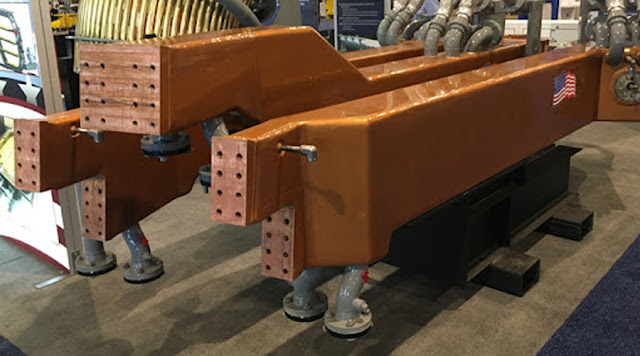Conductive Arm For Furnace - EAF
Steel is one of the most important materials in the modern world. Its used in industries such as construction, automotive, aerospace and energy. Steel production involves several processes, one of which is the electric arc furnace method.
In this method, an electric arc is used to melt scrap steel and convert it into new steel.
An important part of the electric furnace is the conductive arm for furnace, which plays a vital role in the steelmaking process and has greatly promoted the development of the steelmaking process.
Conductive Arm for Furnace
A conductive cross arm is a highly specialized piece of equipment that carries electrical current from a power source to the scrap steel in the furnace. It consists of a series of conductive elements, such as copper strips or graphite electrodes, connected to a power source. The electrode arms are designed to withstand extreme temperatures, high current densities and mechanical stress.
Significant advances have been made over the years in the design and manufacture of electric arc furnace conductive arms. These advancements improve the efficiency, cost-effectiveness and overall performance of the steelmaking process. One of the key innovations in conductive arm technology is the use of water-cooled copper plates.
Water-cooled copper plates offer several advantages over traditional conductive arm designs. The panels are made of high-quality copper and feature internal water channels. When electricity passes through the conductive arms, heat is generated.
Water circulating through the channels absorbs heat, preventing the conductive arms from overheating and extending their service life.
The use of water-cooled copper plates also improves the energy efficiency of arc melting furnaces. By efficiently dissipating heat, energy wastage is reduced, resulting in lower operating costs and a smaller environmental footprint. Additionally, better heat dissipation allows for higher current densities, allowing the furnace to melt more scrap in less time.
Another advancement in conductive arm for furnace technology is the development of modular designs. Traditional conductive arms are typically assembled on site, which can be time-consuming and laborious.
On the other hand, modular design allows for prefabrication and easy installation. This not only saves time and effort but also ensures better precision and quality control during the manufacturing process.
Additionally, the modular design provides flexibility in terms of maintenance and repairs. If part of the conductive arm is damaged or worn, it can be easily replaced without disassembling the entire structure. This significantly reduces downtime and increases the overall productivity of the steelmaking process.
Due to continuous research, innovation and technological advancement, EAF conductive arms have come a long way. The use of water-cooled copper plates and modular design has revolutionized the steelmaking process, making it more efficient, cost-effective and environmentally friendly.
As global steel demand continues to grow, efficient and reliable steelmaking processes have become even more important. The conductive arm plays a vital role in ensuring the smooth operation of the electric arc furnaces. By adopting the latest advances in conductive arm technology, steel manufacturers can meet growing steel demand while reducing costs and minimizing environmental impact.
In conclusion, significant advances have been made in the conductive arms of electric arc furnaces, with the use of water-cooled copper plates and modular design leading the way.
Conductive Arm for Furnace's innovations improve the efficiency, cost-effectiveness and overall performance of the steelmaking process. As the steel industry continues to evolve, these advances must be embraced to meet growing steel demand in a sustainable manner.
E-mail: saleswn@hanrm.com / inquiry66@hanmetallurgy.com (Daisy Zhai)
Tel / Whatsapp / Wechat: 0086 17791213533
Xi'an Hani Tech Co., Ltd.



Comments
Post a Comment